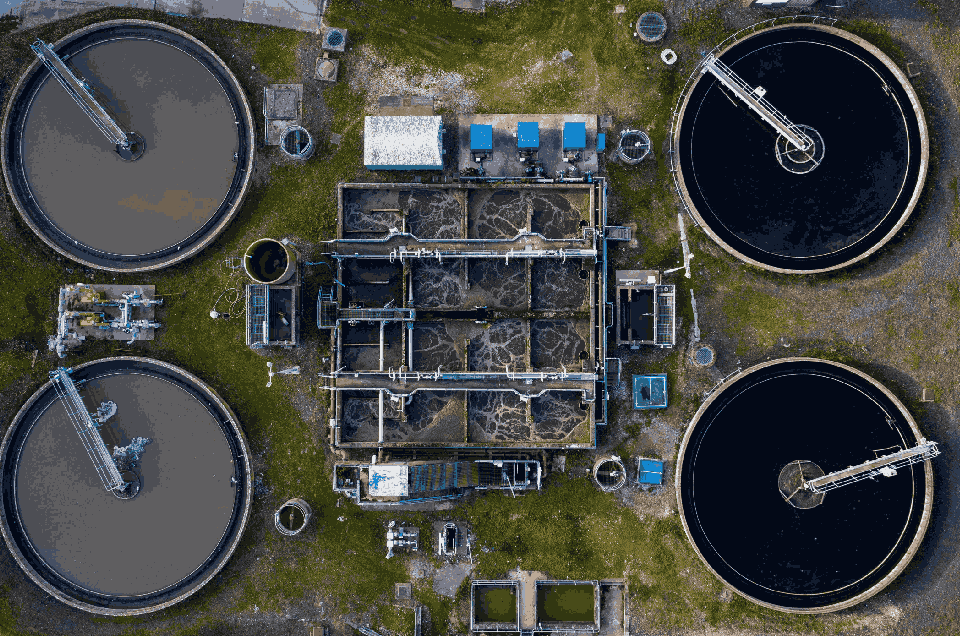25 Apr Ultrasonics for wastewater treatment
Reading Time: < 1 minutes
One doesn’t need to spell out the importance of wastewater treatment. Awareness about this is something that has been taught since elementary school. From protecting people to protecting the local ecosystem, which wastewater treatment caters to. Due to the volume of garbage that society produces, water treatment facilities were created to speed up the natural process of purifying water. Life would be far more dangerous without wastewater treatment and other recycling procedures.
Water waste management is a critical aspect of environmental protection and sustainability. Effective management of water waste involves the treatment and disposal of wastewater to ensure that it does not harm the environment. Ultrasonics technology has proven to be a valuable tool in the management of water waste, and in this blog post, we will explore some of the ways it helps in this field.
Ultrasonics can be used in water and wastewater management in various ways, including:
Level measurement: Ultrasonic level sensors can be used to measure the level of water in tanks, reservoirs, and other storage vessels. This information can be used to control the pumping and discharge of water, as well as to prevent overflows and spills.
Cleaning: Ultrasonic cleaners can be used to clean wastewater treatment equipment, such as filters and membranes. This process can help to remove fouling and improve the performance and efficiency of the equipment.
Disinfection: Ultrasonic devices can be used to enhance the disinfection process in wastewater treatment plants. Ultrasonic waves can help break down the cell walls of bacteria and viruses, making them more vulnerable to treatment with chemicals or other disinfectants.
Sludge treatment: Ultrasonic devices can be used to improve the dewatering and digestion of sludge in wastewater treatment plants. Ultrasonic waves can help break down the cell walls of organic matter, making it easier to separate and remove from the water.
Ultrasonic technology can help reduce the amount of energy required to mix and process cement.
Ultrasonic technology has been utilized in wastewater treatment to improve the effectiveness of various treatment processes. For instance, it can be used in the pre-treatment of wastewater to break down large organic molecules and reduce the organic load. Ultrasonics can also be used in conjunction with other treatment processes, such as oxidation and disinfection, to enhance their effectiveness.
Ultrasonic technology has been utilized in the cleaning of membrane filtration systems used in water waste management. Membrane filtration is an effective process for removing impurities from wastewater. However, over time, the membranes can become clogged, reducing their effectiveness.
Ultrasonics has been utilized in the disintegration of sludge, a byproduct of wastewater treatment. Sludge is typically treated and disposed of in landfills, which is an expensive and environmentally harmful process.
Ultrasonic technology has been utilized in the removal of oil and grease from wastewater. Oil and grease can be difficult to remove using traditional treatment methods. Ultrasonic technology can be used to emulsify the oil and grease, making it easier to separate from the wastewater.
Ultrasonic technology has been utilized in the monitoring of water flow in pipelines. It can be used to detect leaks, blockages, and other issues that can impact the effectiveness of water waste management systems. Ultrasonic flow meters use sound waves to measure the flow of water, providing accurate and reliable information.
Even though there are multiple methods, such as chemical treatment, filtration, biological treatment, absorption, reverse osmosis, and many more, studies have proven that ultrasonics for wastewater management has been effective compared to the rest. Here are some reasons why ultrasonic technology is better:
Non-Invasive: Ultrasonic technology is non-invasive, meaning that it does not require any physical contact with the wastewater. This is a significant advantage, as it reduces the risk of contamination and damage to equipment.
Energy-Efficient: Ultrasonic technology is energy-efficient compared to other methods such as chemical treatment or reverse osmosis. Ultrasonic waves can be used to break down impurities in wastewater, reducing the need for additional energy-intensive treatment methods. Additionally, ultrasonic technology can be used in combination with other energy-efficient methods such as membrane filtration, reducing the overall energy required for wastewater treatment.
Cost-Effective: Ultrasonic technology can be cost-effective compared to other methods, especially for small-scale or decentralized wastewater treatment applications. Ultrasonic technology requires less infrastructure and is less labor-intensive than other methods, making it a cost-effective option in certain situations.
Ultrasonic technology has proven to be a valuable tool in water waste management. It has been utilized in various processes, such as wastewater treatment, membrane cleaning, sludge disintegration, oil and grease removal, and flow monitoring. As technology continues to evolve, it is expected that even more innovative applications will emerge, further enhancing the effectiveness of water waste management systems.
Ralsonics has been in business with ultrasonic technology for over 49 years. Wastewater treatment using Ralsonics's Tube Resonator helps provide a significant improvement in management. Ralsonics provides a full array of ultrasonic resonators, cleaners, and sonicators. With the company's ability to design and build its own equipment, the products can be customized to meet specific requirements.
Water waste management is a critical aspect of environmental protection and sustainability. Effective management of water waste involves the treatment and disposal of wastewater to ensure that it does not harm the environment. Ultrasonics technology has proven to be a valuable tool in the management of water waste, and in this blog post, we will explore some of the ways it helps in this field.
Ways in which ultrasonics can be used in wastewater management
Ultrasonics can be used in water and wastewater management in various ways, including:
Level measurement: Ultrasonic level sensors can be used to measure the level of water in tanks, reservoirs, and other storage vessels. This information can be used to control the pumping and discharge of water, as well as to prevent overflows and spills.
Cleaning: Ultrasonic cleaners can be used to clean wastewater treatment equipment, such as filters and membranes. This process can help to remove fouling and improve the performance and efficiency of the equipment.
Disinfection: Ultrasonic devices can be used to enhance the disinfection process in wastewater treatment plants. Ultrasonic waves can help break down the cell walls of bacteria and viruses, making them more vulnerable to treatment with chemicals or other disinfectants.
Sludge treatment: Ultrasonic devices can be used to improve the dewatering and digestion of sludge in wastewater treatment plants. Ultrasonic waves can help break down the cell walls of organic matter, making it easier to separate and remove from the water.
Reasons to use ultrasonics for wastewater treatment
Ultrasonic technology can help reduce the amount of energy required to mix and process cement.
Wastewater Treatment
Ultrasonic technology has been utilized in wastewater treatment to improve the effectiveness of various treatment processes. For instance, it can be used in the pre-treatment of wastewater to break down large organic molecules and reduce the organic load. Ultrasonics can also be used in conjunction with other treatment processes, such as oxidation and disinfection, to enhance their effectiveness.
Membrane Cleaning
Ultrasonic technology has been utilized in the cleaning of membrane filtration systems used in water waste management. Membrane filtration is an effective process for removing impurities from wastewater. However, over time, the membranes can become clogged, reducing their effectiveness.
Sludge Disintegration
Ultrasonics has been utilized in the disintegration of sludge, a byproduct of wastewater treatment. Sludge is typically treated and disposed of in landfills, which is an expensive and environmentally harmful process.
Oil and grease removal
Ultrasonic technology has been utilized in the removal of oil and grease from wastewater. Oil and grease can be difficult to remove using traditional treatment methods. Ultrasonic technology can be used to emulsify the oil and grease, making it easier to separate from the wastewater.
Flow Monitoring
Ultrasonic technology has been utilized in the monitoring of water flow in pipelines. It can be used to detect leaks, blockages, and other issues that can impact the effectiveness of water waste management systems. Ultrasonic flow meters use sound waves to measure the flow of water, providing accurate and reliable information.
Advantages of using ultrasonics in wastewater management
Even though there are multiple methods, such as chemical treatment, filtration, biological treatment, absorption, reverse osmosis, and many more, studies have proven that ultrasonics for wastewater management has been effective compared to the rest. Here are some reasons why ultrasonic technology is better:
Non-Invasive: Ultrasonic technology is non-invasive, meaning that it does not require any physical contact with the wastewater. This is a significant advantage, as it reduces the risk of contamination and damage to equipment.
Energy-Efficient: Ultrasonic technology is energy-efficient compared to other methods such as chemical treatment or reverse osmosis. Ultrasonic waves can be used to break down impurities in wastewater, reducing the need for additional energy-intensive treatment methods. Additionally, ultrasonic technology can be used in combination with other energy-efficient methods such as membrane filtration, reducing the overall energy required for wastewater treatment.
Cost-Effective: Ultrasonic technology can be cost-effective compared to other methods, especially for small-scale or decentralized wastewater treatment applications. Ultrasonic technology requires less infrastructure and is less labor-intensive than other methods, making it a cost-effective option in certain situations.
Ultrasonic technology has proven to be a valuable tool in water waste management. It has been utilized in various processes, such as wastewater treatment, membrane cleaning, sludge disintegration, oil and grease removal, and flow monitoring. As technology continues to evolve, it is expected that even more innovative applications will emerge, further enhancing the effectiveness of water waste management systems.
Ralsonics has been in business with ultrasonic technology for over 49 years. Wastewater treatment using Ralsonics's Tube Resonator helps provide a significant improvement in management. Ralsonics provides a full array of ultrasonic resonators, cleaners, and sonicators. With the company's ability to design and build its own equipment, the products can be customized to meet specific requirements.



No Comments